'Not easy at all': Tackling the first NS boot camp for women
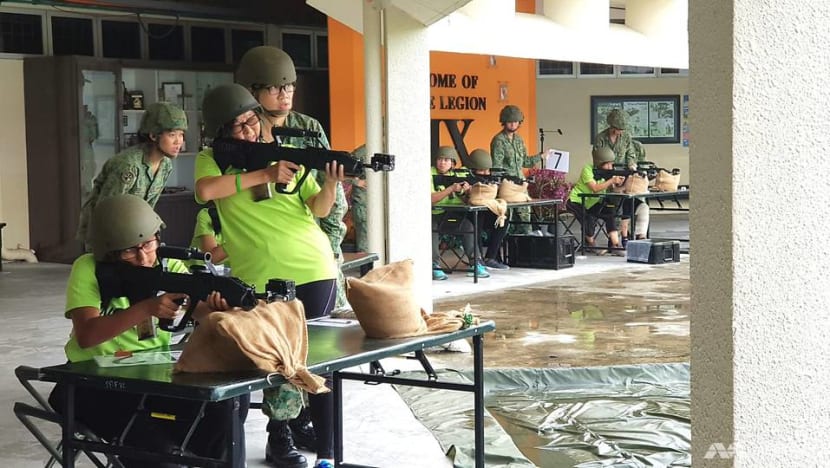
Participants learning to fire the SAR 21. (Photo: Deborah Wong)
SINGAPORE: The minute a bloody tear ripped across my finger, I knew I had overestimated my abilities.
After all, the instructors at the low rope station in the standard obstacle course (SOC) demonstrated the exercise quite effortlessly, without the protection of gloves as they are usually trained to do.
So I jumped up, grabbed the rope and attempted to loop the end of it around my feet to create a step - and failed miserably.
It was a spectacular mess.
But if the grunts around me were anything to go by, I wasn’t the only one lying in a crumpled heap.
"Most of us struggled with the low rope too, we couldn’t pull ourselves up!" 13-year-old Athi Ramesh Athira piped afterwards. The student may be the camp’s youngest participant, but she already has her sights on becoming a regular in the army.
Athi was one of 103 participants bunking in at Maju Camp for the inaugural Women’s Boot Camp over the weekend.
We attempted the SOC station-by-station, wearing just a helmet. But during actual training, recruits typically carry about 10kg to 15kg of weight. This is a combination of a helmet, an SAR 21 (assault rifle) and a load-bearing vest.
The camp, which is an initiative by the Advisory Council on Community Relations in Defence (ACCORD) and organised by Ang Mo Kio Women’s Executive Committee (WEC), was a scaled-down version of the actual National Service experience.
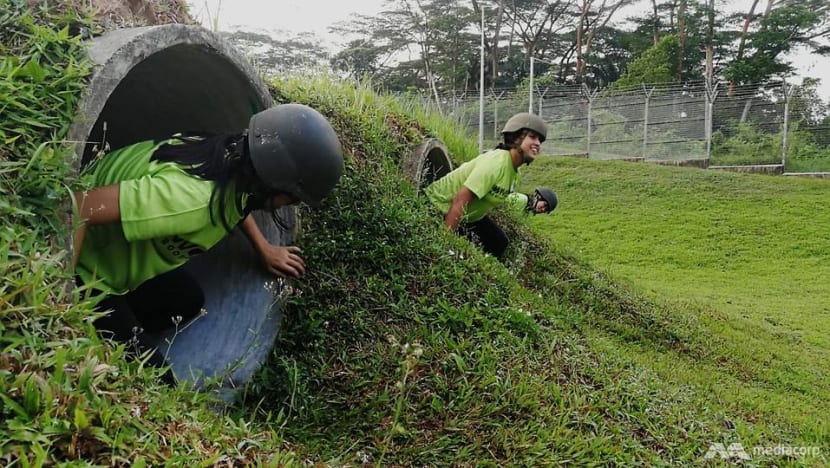
NEWFOUND APPRECIATION
More than 1,000 applicants had registered, but only a handful were selected. And out of the 103, 42 per cent of the participants were between 13 and 24 years old, while 9 per cent were above 50.
The diversity meant that the activities had to be carefully calibrated to cater to various age groups.
Still, it offered us a newfound appreciation of what soldiers go through.
READ: More than 1,000 apply for women-only boot camp for a taste of army life
We were introduced to a buffet of culinary options - in the form of combat rations. On the menu were entrees like Hong Kong chicken noodles and Mexican cheese fried rice, as well as desserts like longan red bean and barley corn soup.
But no matter how fancy the names were, they couldn’t mask the unappetising paste-like appearance of the rations.
Some like the Mexican cheese fried rice were a tad too salty, but I was pleasantly surprised by the desserts, which were actually palatable.
Sustenance is key though, and soldiers depend on such ration packs whenever they go for outfield missions. A meal pack can provide up to 1,000 calories.
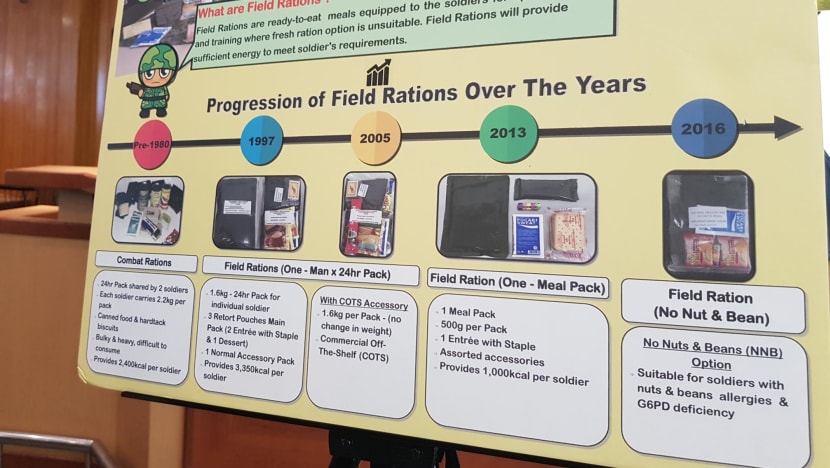
While a certain level of health and fitness surely enables one to thrive in the army, it has to complement technical finesse.
HANDLING SAR 21
Take handling the SAR 21 as an example.
“First you take out the magazine, then you have to insert the round; make sure the sharp point faces away from you. Now slam it back in and make sure the safety catch is on,” the instructor barked, took one look at our puzzled faces and repeated the steps at a slower pace.
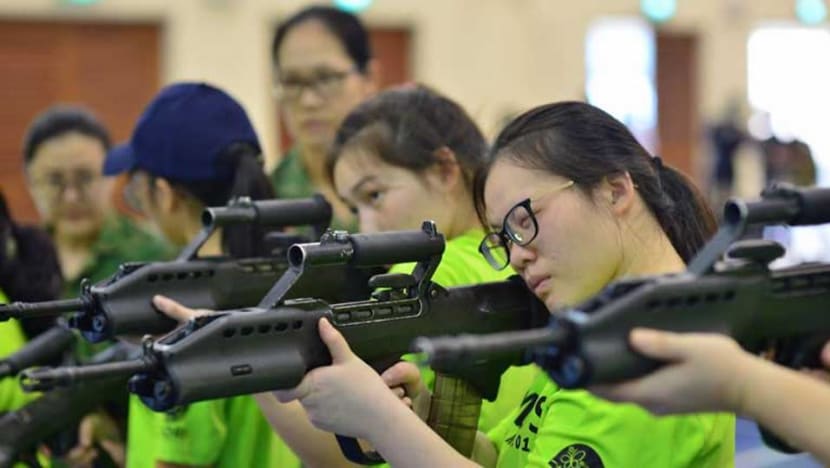
We tried different firing postures and practised loading the rifle several times. While a few managed to complete the process expertly, most of us bungled up the steps.
This was my first time handling a rifle, and frankly, just going through the brief introduction was a rather intimidating experience.
But no amount of preparation could simulate the real deal.
When we traipsed out onto the grounds for the SAR 21 firing exercise, the unmistakable whiff of gunpowder was in the air.
For about an hour, the relative peace at Maju Camp was interrupted by a series of loud cracks and bright flashes as shots rang out in rapid succession.
The rifles, when fitted with a laser and loaded with rounds, can weigh up to 4.5kg.
Now imagine having all that weight slamming into your shoulder, and going temporarily deaf from the sharp crack of the shot at the same time.
It was both thrilling and mortifying. And of course, I missed all my targets.
Other first-time shooters echoed the same sentiment.
"Before handling the weapon, I thought that it was not that heavy. But it's about 4kg! I can carry a rice bag that is 4kg, but not something like this. So it's quite difficult to bring the rifle up, hold it there and focus on your target. After going through this, I find that this is not easy at all,” said Mdm Patsy Chong.
Though the 61-year-old is one of the oldest participants in the camp, she had no qualms about attempting every activity - down to even trying her hand at the firemen lift, during a session on Casualty Evacuation.
The freelance teacher has three sons, one of whom just completed his NS and encouraged her to go for the camp.
“They don’t talk much about their time in army,” she admitted, hoping that this camp would provide some insight to what her sons go through.

Like Mdm Chong, many of the women present had relatives in the service, and safety was a perennial concern.
This issue was raised several times during the Focus Group Discussion on the first evening, which Senior Minister of State for Defence Dr Maliki Osman attended with Ang Mo Kio’s WEC chairman Ms Joanna Portilla.
“As the mothers, the wives of NS men, they wonder about the safety measures put in place when the boys go through the training. So through this experience, they realise that there are safety measures. And it's repeatedly impressed upon the men that they must adhere to,” Ms Portilla said.
SAFETY PROTOCOLS
This means that every activity comes with its own set of safety protocols, such as warm-up and cool-down exercises, a water parade as well as a mandatory declaration of medical issues.
On one occasion, instructors even whipped out thermometers to check participants’ temperatures.
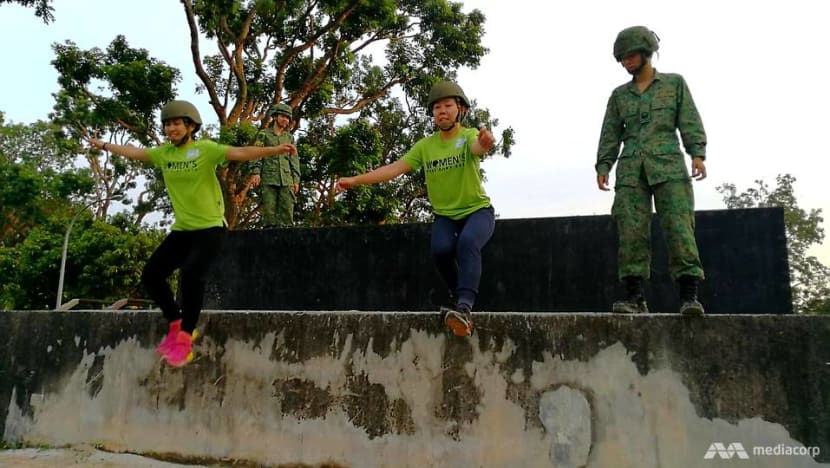
In fact, safety was also a reason we were only allowed to try nine out of 12 SOC stations, as none of us had combat boots, which can provide proper support on the balancing bridge and the apex ladder.
For now, organisers have not confirmed if the event will make a comeback, but they will explore the possibility of doing so after studying the post-event survey.
Sure, the activities aren’t on the same intensity as an actual NS experience and nobody was gunning for a marksmanship badge or aiming to be the best recruit.
But the brief event cracked open the hinges of a usually closed door, and offered a chance for mothers, daughters, spouses and friends to connect better with those who serve.














